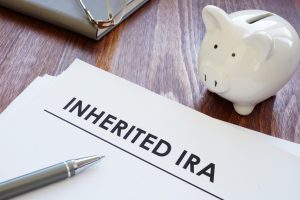Nelson Capital Management


What is an RMD?
Required minimum distributions (RMDs) are withdrawals the IRS requires owners of IRAs (excluding Roth IRAs) take from their tax-deferred accounts each year, starting at age 72 (age 70½ if you attained age 70½ before 2020) or after inheriting any IRA account for individual beneficiaries. If you withdraw less than your RMD, you may owe a 50% penalty tax on the difference.
RMDs are designed to ensure that investments in IRAs do not grow tax-deferred forever and this carries over to the beneficiary of the IRA. The rules for how IRA beneficiaries must take RMDs will depend on when the account owner passed away.
 Inherited RMD calculation methods
Inherited RMD calculation methods
The date of death of the original IRA owner and the type of beneficiary will determine what distribution method to use. You must take an RMD for the year of the IRA owner’s death if the owner had an RMD obligation that was not satisfied.
For an inherited IRA received from a decedent who passed away after December 31, 2019:
Generally, a beneficiary is required to liquidate the account by the end of the 10th year following the year of death of the IRA owner (this is known as the 10-year rule). During the 10-year period, the beneficiary may take distributions of any amount at any frequency. There are exceptions for certain eligible designated beneficiaries, defined by the IRS, as someone who is either:
· The IRA owner’s spouse.
· The IRA owner’s minor child (once the child reaches age of majority, they are subject to the 10-year rule).
· An individual who is not more than 10 years younger than the IRA owner.
· Disabled (as defined by the IRS).
· Chronically ill (as defined by the IRS).
For an inherited IRA received from a decedent who passed away before January 1, 2020:
When a beneficiary becomes entitled to an IRA from an account owner who died before he or she was required to begin taking RMDs (April 1st of the year following the year in which the owner reached RMD age), the beneficiary can choose one of two methods of distribution: over his or her lifetime or within five years (the “five-year rule”).
Lifetime distribution
Spouse as sole primary beneficiary:
If the owner’s spouse chooses to take the IRA as a beneficiary rather than assume the account, he or she can choose when to begin taking RMDs on the basis of his or her own life expectancy. The spouse must begin taking RMDs by the later of December 31 of the year after the owner’s death or December 31 of the year the owner would have reached RMD age. If the owner’s spouse chooses to assume the IRA, he or she must begin taking RMDs by the later of December 31 of the year after the owner’s death or April 1 of the year after the spouse reaches RMD age.
Non-spouse and when spouse is not sole primary beneficiary:
An individual non-spouse beneficiary must begin taking RMDs on the basis of his or her own life expectancy by December 31 of the year after the owner’s death. Multiple beneficiaries can take RMDs on the basis of their own life expectancies if all of the beneficiaries have established separate accounts by December 31 of the year after the owner’s death and starting in that year. If all multiple beneficiaries have not established separate accounts by that December 31 date, all beneficiaries must take RMDs on the basis of the oldest beneficiary’s life expectancy starting in the year after the owner’s death.
RMDs and Inherited 401(k)s
By law, the beneficiary to your 401(k) account must be your spouse unless you are single or your spouse signs a waiver. If you inherit a 401(k) from a deceased spouse, you can leave it in the plan as long as the company sponsoring it allows it. Or you can roll over the assets into an inherited IRA. In this case, you will be subject to the RMD rules that apply to spousal inherited IRAs as described above. Likewise, a non-spousal beneficiary who rolls over inherited 401(k) assets into an inherited IRA will abide by the applicable RMD rules stated above.
Sources: Vanguard, Charles Schwab, IRS
Individual investment positions detailed in this post should not be construed as a recommendation to purchase or sell the security. Past performance is not necessarily a guide to future performance. There are risks involved in investing, including possible loss of principal. This information is provided for informational purposes only and does not constitute a recommendation for any investment strategy, security or product described herein. Employees and/or owners of Nelson Capital Management, LLC may have a position securities mentioned in this post. Please contact us for a complete list of portfolio holdings. For additional information please contact us at 650-322-4000.
Receive our next post in your inbox.